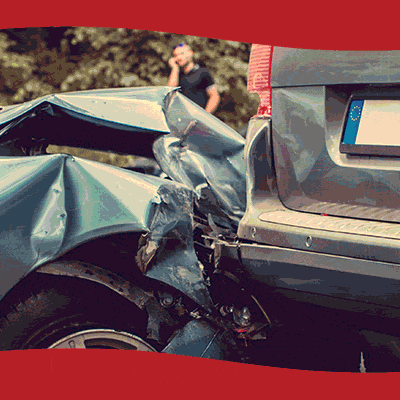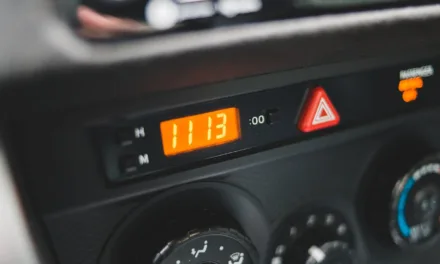Around the time of National Road Safety Week (14-20 November) we tend to see darker nights and colder temperatures here in the UK, making everything feel much more challenging – and driving is no exception. From slippery road conditions to poor visibility, winter driving comes with a host of potential hazards.
This time of year, it is particularly dangerous for those who drive for work, such as taxi drivers or couriers. Keeping yourself and others safe should be your number one priority.
Avoid an accident or breakdown in winter by following our ultimate guide on how to stay safe whilst driving during challenging weather conditions.
How to prepare to drive in icy weather
Preparing your vehicle
Ensuring your vehicle is in top condition is even more important during winter, as the cold temperatures and icy roads can have a detrimental effect on your driving.
Advertisement
Before winter begins we recommend that all vehicles are fully serviced, ensuring:
- All lights are clean and working
- The battery is charged
- All windows are clean
- Windscreen wipers are in good working order
- Appropriate screen wash is used
- Tyres are free from bulges and tears with no cord exposed, correctly inflated and with a safe tread depth
- All fluids are topped up and antifreeze used where required
- Winter tyres have been installed
Top tips for safe winter driving
1. Drive slow — Speed limits indicate the maximum speed that should be travelled on that type of road. Depending on the type of vehicle you are driving and the current weather conditions, you may need to slow down.
2. Allow extra space — Stopping distances can increase to more than double during bad weather. Maintaining a safe distance from the vehicle in front allows more time to plan and brake as required.
3. Driving in fog — Before entering fog, it’s important to switch fog lights on, check your mirrors and slow down. Fog creates low levels of visibility, so remember to stay cautious of other drivers who may not be using headlights and keep a safe distance behind the vehicle in front.
4. Loss of control — If the steering becomes unresponsive, it is likely that the tyres don’t have enough grip on the road. The best way to deal with this is to ease off the accelerator and slow down gradually. You should switch to winter tyres before the winter period, to increase the amount of grip you have while driving.
5. Driving on ice — When the temperature drops towards freezing, be wary of black ice. Drive slowly and avoid breaking where possible as this can cause the car to spin out of control.
6. Know when to stop — If visibility becomes extremely poor, drive carefully until it is safe to stop at a nearby petrol station, service station or safe location (such as a lay-by) until visibility increases. Avoid the hard shoulder as the chances of an incident occurring there are much higher in the winter months.
7. How to drive in snow — If your car gets stuck while driving in snow, take your foot off the accelerator and avoid spinning your tyres. Instead, try the rocking manoeuvre which might give you enough momentum to drive out .
Advertisement
8. The highway code — Ensure that you consult the Highway Code which applies in England, Scotland and Wales, or the Highway Code for Northern Ireland and see rules 226 to 237 for further advice on driving in adverse weather conditions.
Winter driving tips for taxi drivers
Taxi drivers face a greater risk by being on the road more often than the average motorist. To ensure you’re fully prepared, we’ve compiled our top tips for taxi drivers driving in winter.
Winter car checklist
As a taxi driver, you don’t just have your own safety to worry about, but also the safety of your passengers. Keeping your taxi fully stocked with essential items will ensure you are best prepared and have a better chance of getting out of a challenging situation if the weather gets you into difficulty.
Here’s our taxi driver winter car checklist that you should never start a journey without:
- De-icer
- Ice-scrapers
- Blankets and additional warm clothing
- A torch
- Hi-vis clothing
- A power bank or portable phone charger
- Food and water for you and your passengers
- A snow shovel
Additional steps for looking after your vehicle
We recommend that taxi drivers take these additional steps to help keep your vehicle running smoothly during the winter months.
- Check your tyres — If your tyres aren’t at the correct pressure, you’re at risk of punctures, poor grip and diminished braking potential. Each of these risks is significantly increased when driving on ice or in other hazardous situations. Using winter tyres is a good way to reduce the likelihood of an accident in challenging weather conditions.
- Shovel snow — Large quantities of snow can end up causing blockages in places you really don’t want them, like exhaust pipes. Melting snow can also result in water creeping into brake seals, causing a significant risk of becoming unresponsive. Take a quick lap of your vehicle after each journey and clear away any snow that could lead to problems.
- Keep your lights and registration plates clean — There is a legal obligation to ensure both your lights and registration plates are unobstructed when on the road. Lights will be significantly less effective if hidden behind a thick layer of snow, therefore it’s important to clean them when they become frosty or covered in snow.
- Pay attention to your engine — Everything from the low temperatures of winter to the way you drive in snow has an effect on your car’s engine. It’s important to stay alert and listen out for any unfamiliar noises coming from your vehicle. If anything seems off, take your vehicle to a specialist for a check-up.
- Rinse your vehicle — To combat hazardous winter roads, grit lorries often take to the streets in a bid to melt the ice. The salt can, however, damage parts of your vehicle when it mixes with snow. You can prevent this by rinsing your vehicle at the end of each day to remove any gritty residue.
If an incident occurs
In the unfortunate case of a breakdown, dangerous situation or if you have a collision, inform your breakdown assistance or the Police on 999 as required.
If you’re a CMAC supplier and an incident that you’re involved in is likely to impact a CMAC passenger/client, please contact our Service Delivery team when it is safe to do so.



















Leave a Reply